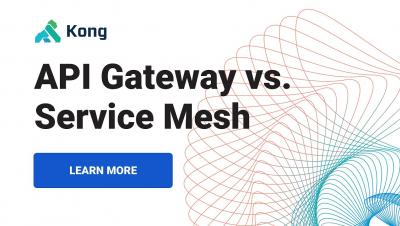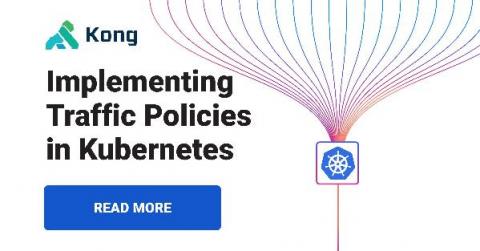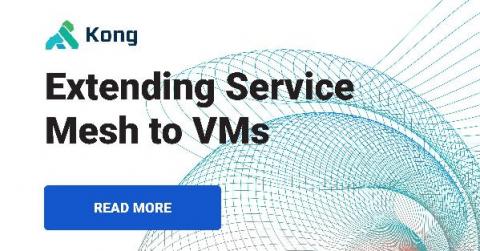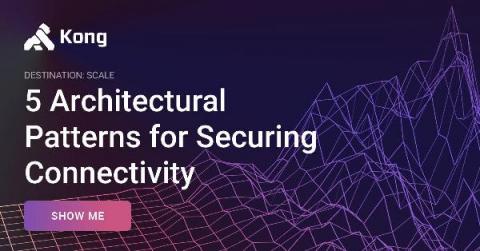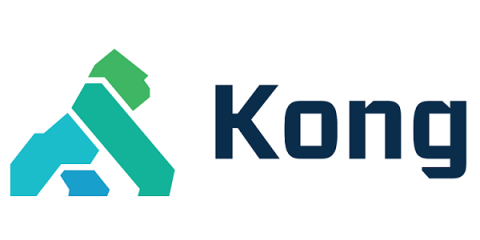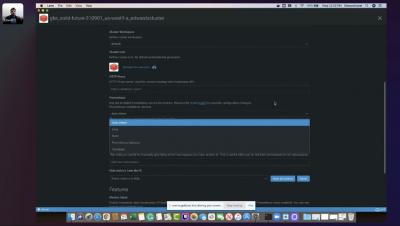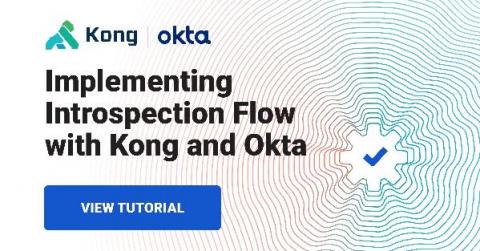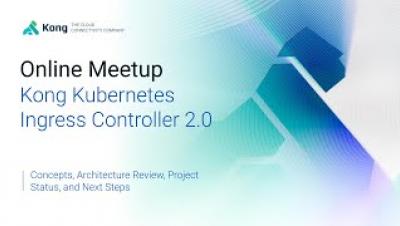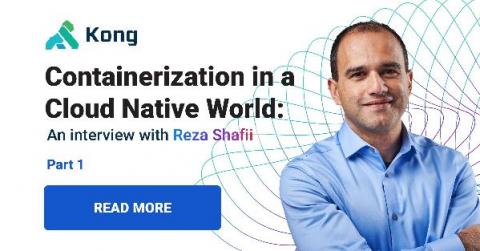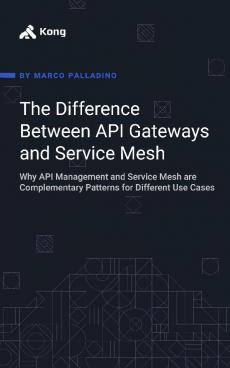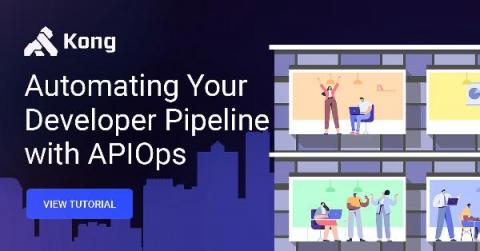Systems | Development | Analytics | API | Testing
June 2021
Implementing Traffic Policies in Kubernetes
When setting up Kubernetes for the first time, one of the networking challenges you might face is how to safely grant outside clients access to your cluster. By default, pods within a cluster can communicate with all other pods and services. You should restrict access to anything outside of that group.
Kong Builders Livestream - Konnect Meets Kubernetes
Okta and Kong Konnect Part 4: Setting Access Control Policies
Setting Access Control Policies With Kong and Okta
In our last Kong and Okta tutorial, we will implement a basic access control policy based on Okta’s groups and planes. This series will show you how to implement service authentication and authorization for Kong Konnect and Okta using the OpenID Connect (OIDC) plugin.
Extending Connectivity to Cloud Native and VM-based Applications
We all know that what customers see in the market is, in fact, only a small percent of the shifts happening within our organizations. Recently, Time Magazine stated that “Every Company is a Tech Company… The Disruption is Just Beginning.” We’re seeing it in the way we wait in lines, find places to stay when traveling and work from anywhere. The disruption is distribution, and it impacts how we live and build applications.
5 Architectural Patterns for Securing Connectivity at Scale
In the age of surgical robots, smart refrigerators, self-driving vehicles and unmanned aerial vehicles, connectivity undoubtedly is a foundational block for our modern world. Connectivity not only enables easy access to resources, but it also opens up opportunities to drive innovation by connecting isolated systems. Connectivity drives digital transformation.
Complexity Reigns, rein it in with Kong Konnect - APAC Meetup - Brad Drysdale
Kong Builders Livestream - Kuma 1.2 release
Konnect Meetup - June 2021 - Melissa van der Hecht & Ross McDonald
Kuma 1.2 and Kong Mesh 1.3 Released
We are happy to announce a new major release of Kuma, and a new major release of Kong Mesh built on Kuma! Kuma 1.2 ships with 20 new features and countless improvements. We strongly suggest to upgrade, in order to take advantage of the latest and greatest when it comes to service mesh.
A Sneak Peek at Scaling Without (So Much) Pain [Destination: Scale]
Getting Started with Kong Ingress Controller for Kubernetes
Creating an Interactive Developer Portal with GraphQL
Extending Kong Developer Portal With GraphQL
Kong Developer Portal comes out of the box with a RESTful API-based catalog and YAML-based template functionality. In this tutorial, I’ll show you how to get to the next level of API documentation using Kong Developer Portal with GraphQL. That way, you’ll be able to give your API developers an interactive experience.
Kong Builders - Livestream featuring #Kuma #ServiceMesh
Okta and Kong Konnect Part 3: Implementing Introspection Flow
Implementing Introspection Flow With Kong and Okta
In our third Kong and Okta tutorial, we’ll go through the introspection flow implementation. This series will show you how to implement service authentication and authorization for Kong Konnect and Okta using the OpenID Connect (OIDC) plugin.
[Online Meetup] Kong Kubernetes Ingress Controller 2.0
Simplifying PCI Compliance With Kong Gateway
Razorpay is a payments processor that’s required to comply with PCI guidelines. This article will explain how we developed a custom Lua plugin to simplify PCI compliance with Kong Gateway.
Security Game Plan for Your Microservices Applications
The demand for digital transformation has accelerated, with 62% of technology leaders sharing that they fear they are at risk of being displaced by competitors who innovate more quickly. Enterprises are increasingly transitioning from monolithic to microservices architecture, with the goal to accelerate application development, speed up innovation and reduce time to market.
Breaking Down Monoliths [Destination: Scale]
"Gateway Mode" in Kuma and Kong Mesh
One of the most common questions I get asked is around the relationship between Kong Gateway and Kuma or Kong Mesh. The linking between these two sets of products is a huge part of the unique “magic” Kong brings to the connectivity space. In this blog post and the video below, we’re going to jump right into breaking down the relationship between these products and how you can use them together. First, let’s break down a couple of the terms that are involved.
Containerization in a Cloud Native World: An Interview With Reza Shafii
Multi-cloud infrastructure is changing the way companies approach their software architecture. What started solely as gateway traffic management has evolved into full lifecycle API management. I recently sat down with Reza Shafii, Kong’s VP of product, for a blog series where we explore how full lifecycle service management ties into the concept of cloud native.
Understanding "Gateway Mode" in Kuma and Kong Service Mesh
Migrating from Kong Gateway OSS to Konnect
Konnect is a hybrid cloud control plane managed by Kong that launched in May. Konnect provides an easy way to create and configure service configurations through a UI, rather than using the admin API and HTTP requests to configure your Kong Gateway. On top of that, it provides usage analytics, a developer portal and role-based access control for service configuration. If you have a Kong Gateway OSS installation, you may be wondering how you can move your instance over to Konnect.
Accelerate Digital Business With APIOps - Part 1
Operating APIs and microservices at scale relies on the right processes and company culture. APIOps is the name for this overall approach. If done right, organizations can accelerate digital business with APIOps. It combines modern automation tooling with best practice engineering principles to ensure that the organization delivers with continuous quality as well as speed. In this blog series we explore the triggers for adopting APIOps, and its impact, through the story of “Acme.”
The Difference Between API Gateways and Service Mesh
Automating Your Developer Pipeline With APIOps (DevOps + GitOps)
APIOps is the complete end-to-end automation of the API lifecycle, combining DevOps and GitOps. With APIOps, you can enhance your productivity through the reuse of APIs. In this tutorial, we’ll walk you through how to:


